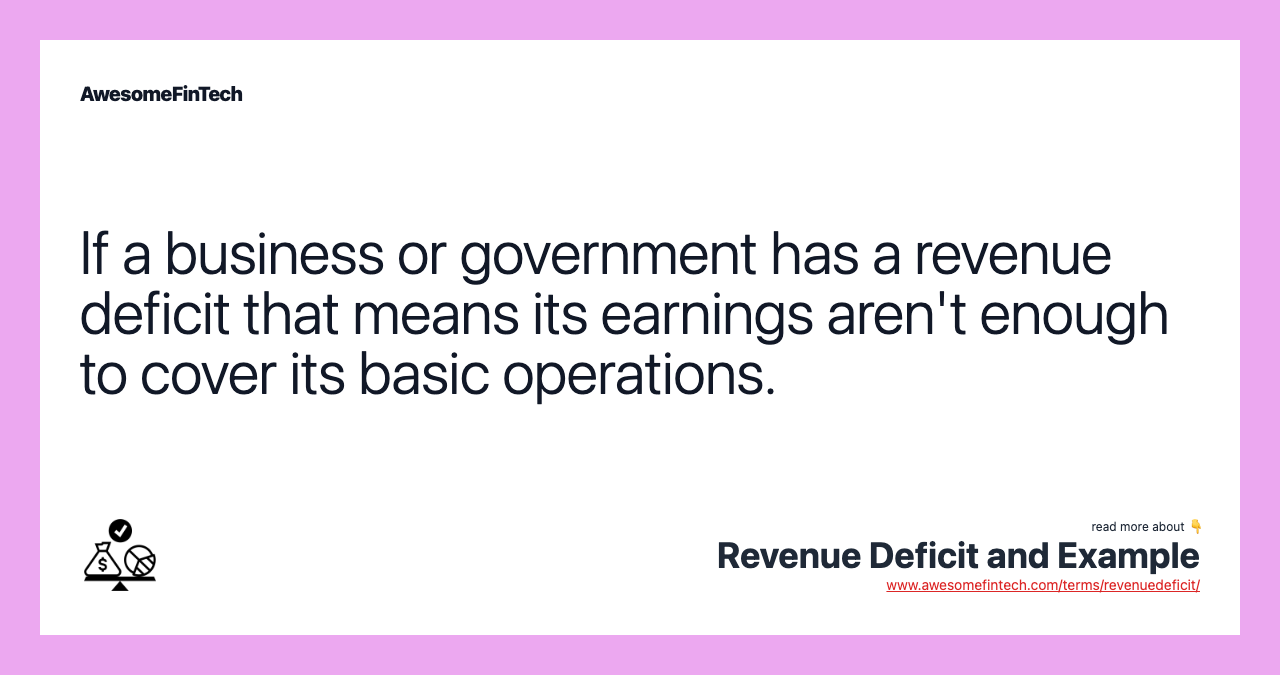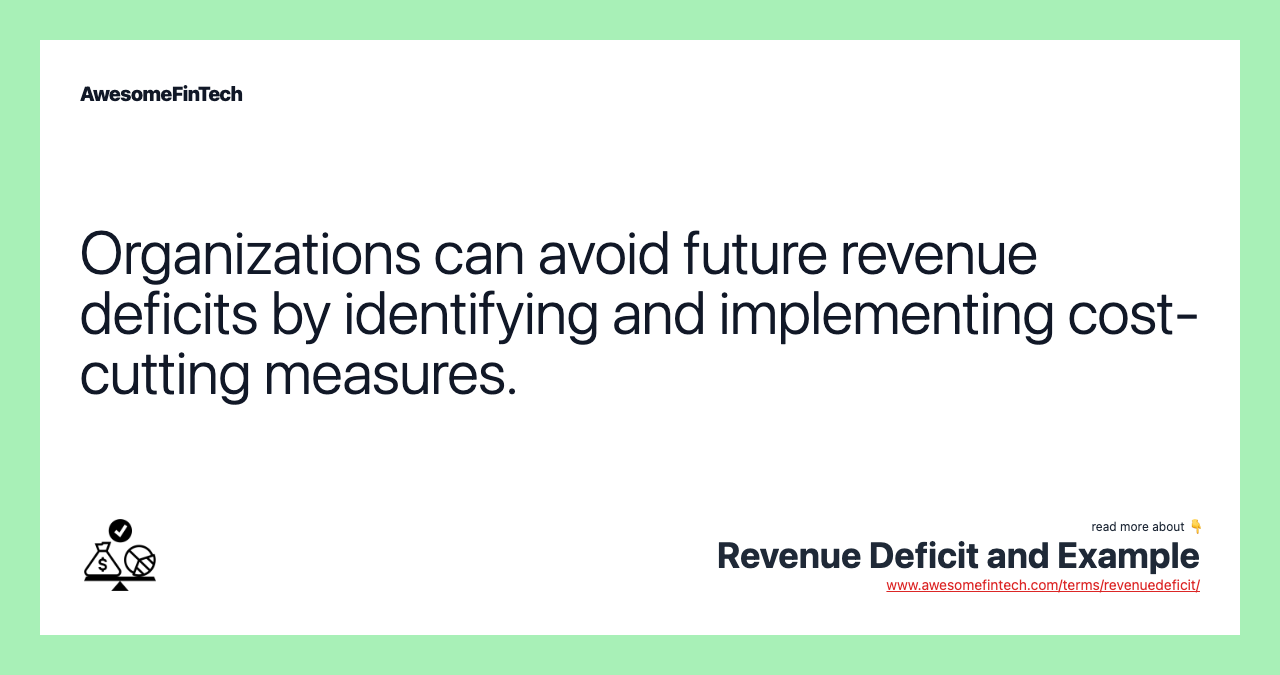Revenue Deficit and Example
A revenue deficit occurs when realized net income is less than the projected net income. A revenue deficit, not to be confused with a fiscal deficit, measures the difference between the projected amount of income and the actual amount of income. A revenue deficit does not mean loss of revenues has occurred — it's simply measuring the difference between a projected amount of income and the actual amount of income. A revenue deficit occurs when realized net income is less than the projected net income. This happens when the actual amount of revenue and/or the actual amount of expenditures do not correspond with budgeted revenue and expenditures.

What is a Revenue Deficit?
A revenue deficit occurs when realized net income is less than the projected net income. This happens when the actual amount of revenue and/or the actual amount of expenditures do not correspond with budgeted revenue and expenditures. This is the opposite of a revenue surplus, which occurs when the actual amount of net income exceeds the projected amount.
A revenue deficit is not indicative of a loss of revenue.



Understanding Revenue Deficit
A revenue deficit, not to be confused with a fiscal deficit, measures the difference between the projected amount of income and the actual amount of income. If a business or government has a revenue deficit that means its income isn't enough to cover its basic operations. When that happens, it may make up for the revenue it needs to cover by borrowing money or selling existing assets.
To remedy a revenue deficit, a government can choose to raise taxes or cut expenses. Similarly, a company with a revenue deficit can make improvements by cutting variable costs, such as materials and labor. Fixed costs are more difficult to adjust because most are established by contracts, such as a building lease.
Disadvantages of Revenue Deficit
If not remedied, a revenue deficit could adversely affect the credit rating of a government or business. That's because consistently running a deficit could imply that a government is unable to meet its current and future recurring obligations. It also implies that the government or business will have to disinvest or cover the shortage by borrowing.
Running a revenue deficit places many planned government expenditures in jeopardy as there are not enough funds to cover the costs. Often, a government with a revenue deficit is using savings allocated to other divisions of the economy for its expenditures.
Example of Revenue Deficit
Company ABC projected its 2018 revenue to be $100 million and expenditures to be $80 million for a projected net income of $20 million. At the end of the year, the company found that its actual revenue was $85 million, and its expenditures were $83 million, for a realized net income of $2 million. That resulted in a revenue deficit of $18 million.
The projections for both the expenditures and revenues were off, which could negatively affect future operations and cash flows. If the subject of this example were a government, funding for required public expenditures, such as for infrastructure and schools, could be seriously compromised.
By identifying and employing cost-cutting measures, the company can avoid revenue deficits in the future. It can explore more cost-efficient ways of doing business, such as finding suppliers who can supply materials at a lower cost or by vertically integrating processes along its supply chain. The company can also invest in training its workforce to be more productive.
Related terms:
Accounting
Accounting is the process of recording, summarizing, analyzing, and reporting financial transactions of a business to oversight agencies, regulators, and the IRS. read more
Credit Rating
A credit rating is an assessment of the creditworthiness of a borrower—in general terms or with respect to a particular debt or financial obligation. read more
Deficit
A deficit occurs when expenses exceed revenues, imports exceed exports, or liabilities exceed assets. Federal budget deficits add to the national debt. read more
Disequilibrium
Disequilibrium is a situation where internal and/or external forces prevent market equilibrium from being reached or cause the market to fall out of balance. read more
Fiscal Deficit
A fiscal deficit is a shortfall in a government's income compared with its spending. A government that has a fiscal deficit is spending beyond its means. read more
Hyperinflation
Hyperinflation describes rapid and out-of-control price increases in an economy. In this article, we explore the causes and impact of hyperinflation. read more
Net Income (NI)
Net income, also called net earnings, is sales minus cost of goods sold, general expenses, taxes, and interest. read more
Net Loss
A net loss is when expenses exceed the income or total revenue produced for a given period of time and is sometimes called a net operating loss (NOL). read more
Subvention Income
Subvention income is the amount of revenue that a not-for-profit organization is paid in order to cover the organization's annual operating expenses. read more